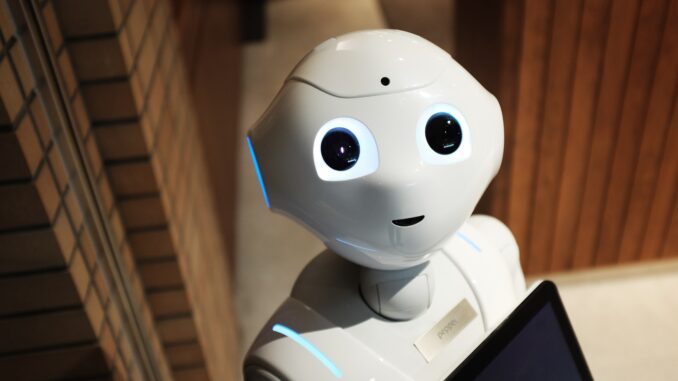
By Chris McGugan
As artificial intelligence (AI) increasingly infiltrates every facet of our lives and businesses, it is facing growing scrutiny for its ethical implications. Many, including those who have played significant roles in developing modern AI, have recognized the need for robust regulation. As the leader of a company that operates at the intersection of technology and social responsibility, I am optimistic about the future of AI. However, because we employ a workforce that includes incarcerated and formerly incarcerated individuals, I am acutely aware of the negative implications that AI can present to our workforce.
Bias in AI models, AI used for surveillance, HR and recruiting, and even the introduction of AI into the legal system present unique challenges for those who have been incarcerated, potentially furthering the discrimination they are battling against. This unique perspective sheds light on the multifaceted challenges and opportunities that AI presents.
Understanding the Negative Aspects of AI
The rapid spread of AI technology, while offering significant advantages, has also given rise to several concerning trends. Bias and discrimination inherent in AI systems can replicate and amplify existing societal prejudices, often at the expense of marginalized groups. Privacy erosion, another critical issue, poses risks of surveillance and data misuse. Additionally, the threat of job displacement due to automation, security vulnerabilities, and the ethical concerns posed by AI decision-making in sensitive areas are challenges that require immediate and thoughtful attention.
In the context of hiring and recruiting, AI-driven bias is a significant concern. AI models, when trained on biased historical data, can inadvertently perpetuate discrimination, making it harder for certain groups, such as individuals with criminal records, to secure employment. For example, background checks are normally limited to seven years, but an AI model may contain data extending beyond that timeframe. Without proper protections in place, candidates may be flagged for offenses that are older than can legally be considered. This would not only impact individual lives but also reinforce systemic inequalities.
Amazon serves as a cautionary tale for bias in AI models. As with many tech companies, Amazon had a lower proportion of women working in the company, leading their recruiting algorithm to identify being male as a factor for success. This created a self-perpetuating pattern of sexism against female candidates.
Amazon’s story, among others, reinforces the need for AI systems that are consciously designed to counteract biases, ensuring fair and equitable hiring practices.
Evaluating AI’s Role in Decision-Making
AI’s application in areas like judicial decision-making, employee management, and corporate risk assessment is growing. However, these models, while sophisticated, are not infallible. Supreme Court Chief Justice John Roberts has stated that any use of AI requires “caution and humility” in his year-end report, citing an instance where AI had led lawyers to cite non-existent cases in court papers.
AI applications should be used as tools to aid, not replace, human judgment. Particularly in judicial and hiring decisions, where the stakes are high, relying solely on AI can lead to oversights and injustices due to the lack of nuanced understanding that human perspective brings. Lack of diverse representation in training data, and the opacity of some AI algorithms can lead to unfair outcomes in various sectors, including employment and criminal justice, areas particularly relevant to second-chance workers. Addressing these issues requires a concerted effort towards developing more inclusive and transparent AI systems.
Regulation and AI Ethics in the Workplace
As companies deploy more AI-powered tools and systems, several considerations are paramount. Ethical deployment, transparency in AI operations, active bias mitigation strategies, and comprehensive employee training about AI’s impact are crucial. These steps not only safeguard against potential risks but also ensure that AI is used as a force for good.
On a larger scale, regulators are now facing the challenge of keeping pace with AI’s rapid development. While I don’t necessarily believe that government officials should be the arbiters of AI development, I recognize that there is a need for guardrails to be established.
Regulatory priorities should include ensuring data privacy and security, addressing bias and fairness, protecting intellectual property, and perhaps most importantly, enhancing transparency. Regulation in these areas is not just about mitigating risks but also about fostering an environment where AI can be developed and used responsibly and beneficially.
Looking Forward
We can already see the profound impact AI will have on society. There is enormous potential for AI to improve efficiency by enhancing automation and providing us with greater access to information. However, AI models must be continuously improved upon and their data carefully curated to eliminate bias and mitigate the negative effects we are seeing now. Without controls in place, marginalized groups will continue to be the most negatively impacted.
As we advance into an AI-driven future, it is imperative to approach AI development and regulation with a socially conscious lens, ensuring that these powerful tools are used ethically and equitably. The journey towards responsible AI is not just a technological challenge but a moral imperative, one that requires collaboration, vigilance, and a steadfast commitment to the betterment of society.
Chris McGugan is CEO of Televerde, a global revenue creation partner supporting marketing, sales, and customer success for B2B businesses around the world. A purpose-built company, Televerde believes in second-chance employment and strives to help disempowered people find their voice and reach their human potential.
partner supporting marketing, sales, and customer success for B2B businesses around the world. A purpose-built company, Televerde believes in second-chance employment and strives to help disempowered people find their voice and reach their human potential.
